Common Kingfisher, Ijsvogel, Eisvogel, Guarda-rios-comum, Martín Pescador Común
Spotted in the Alentejo region of Portugal. Kingfisher sound
Kingfishers are a group of small to medium sized brightly coloured birds in the order Coraciiformes. They have a cosmopolitan distribution, with most species being found in the Old World and Australia.
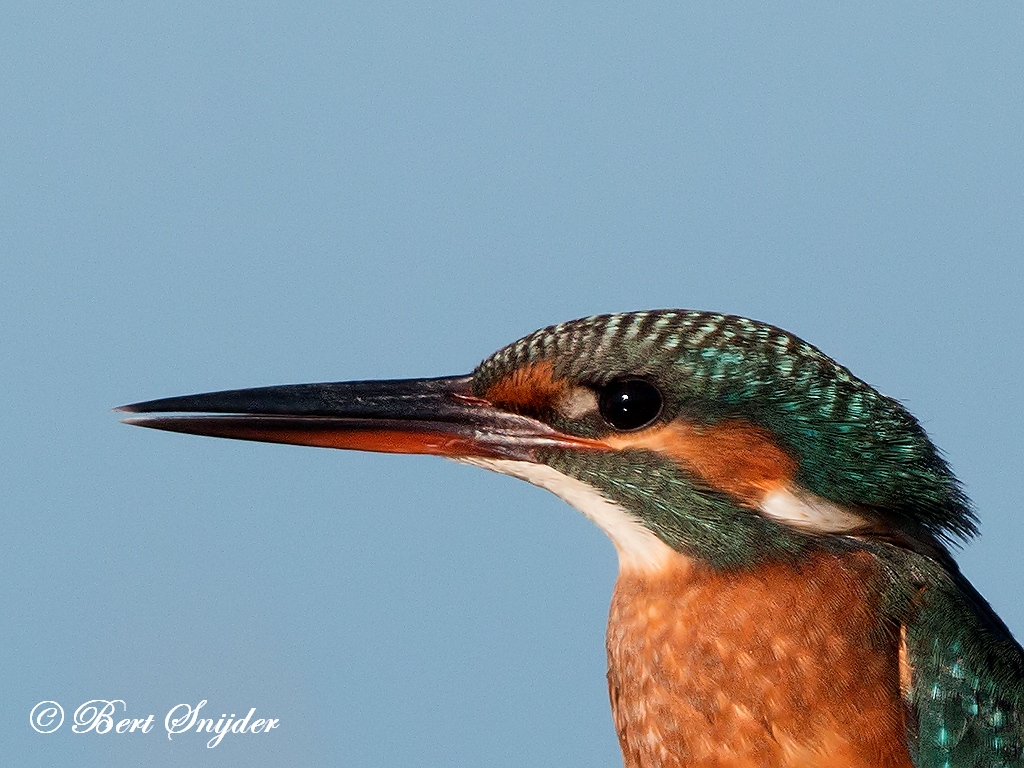
More photos at the bottom of this page:
The group is treated either as a single family, Alcedinidae, or as a suborder Alcedines containing three families, Alcedinidae (river kingfishers), Halcyonidae (tree kingfishers), and Cerylidae (water kingfishers). There are roughly 90 species of kingfisher. All have large heads, long, sharp, pointed bills, short legs, and stubby tails. Most species have bright plumage with little differences between the sexes. Most species are tropical in distribution, and a slight majority are found only in forests. They consume a wide range of prey as well as fish, usually caught by swooping down from a perch. Like other members of their order they nest in cavities, usually tunnels dug into the natural or artificial banks in the ground. A few species, principally insular forms, are threatened with extinction.
The smallest species of kingfisher is the African Dwarf Kingfisher (Ispidina lecontei), which averages at 10.4 g and 10 cm (4 inches). The largest overall is the Giant Kingfisher (Megaceryle maxima), at an average of 355 g (13.5 oz) and 45 cm (18 inches). However, the familiar Australian kingfisher known as the Laughing Kookaburra (Dacelo novaeguineae) may be the heaviest species, since large individuals exceeding 450 g (1 lb) are not rare.
The plumage of most kingfishers is bright, with green and blue being the most common colours. The brightness of the colours is neither the product of iridescence (except in the American kingfishers) or pigments, but is instead caused by the structure of the feathers, which causes scattering of blue light (the Tyndall effect). In most species there are no differences between the sexes, when there are differences they are quite small (less than 10%).
The kingfishers have a long, dagger-like bill. The bill is usually longer and more compressed in species that hunt fish, and shorter and more broad in species that hunt prey off the ground. The largest and most atypical bill is that of the Shovel-billed Kookaburra, which is used to dig through the forest floor in search of prey. They generally have short legs, although species that feed on the ground have longer tarsi. Most species have four toes, three of which are forward pointing.
The irises of most species are dark brown. The kingfishers have excellent vision; they are capable of binocular vision and are thought in particular to have good colour vision. They have restricted movement of their eyes within the eye sockets, instead using head movements in order to track prey. In addition they are able to compensate for the refraction of water and reflection when hunting prey underwater, and are able to judge depth underwater accurately. They also have nictitating membranes that cover the eyes when they hit the water in order to protect them; in the Pied Kingfisher has a bony plate which slides across the eye when the bird hits the water.
While kingfishers are often associated with fish, most species also consume other prey. Here a Collared Kingfisher in Saipan has caught a lizard.
The kingfishers feed on a wide variety of items. They are most famous for hunting and eating fish, and some species do specialise in catching fish, but other species take crustaceans, frogs and other amphibians, annelid worms, molluscs, insects, spiders, centipedes, reptiles (including snakes) and even birds and mammals. Individual species may specialise in a few items or take a wide variety of prey, and for species with large global distributions different populations may have different diets. Woodland and forest kingfishers take mainly insects, particularly grasshoppers, whereas the water kingfishers are more specialised in taking fish. The Red-backed Kingfisher has been observed hammering into the mud nests of Fairy Martins to feed on their nestlings. Kingfishers usually hunt from an exposed perch, when a prey item is observed the kingfisher swoops down to snatch it, then returns to the perch. Kingfishers of all three families beat larger prey on a perch in order to kill the prey and to dislodge or break protective spines and bones. Having beaten the prey it is manipulated and then swallowed. The Shovel-billed Kookaburra uses its massive wide bill as a shovel in order to dig for worms in soft mud.
Kingfishers are territorial, some species defending their territories vigorously. They are generally monogamous, although cooperative breeding has been observed in some species. In a few species cooperative breeding is quite common, for example the laughing Kookaburra, where helpers aid the dominant breeding pair in raising the young.
Like many forest living kingfishers, the Yellow-billed Kingfisher often nests in arboreal termite nests.
Like all Coraciiformes, the kingfishers are cavity nesters, with most species nesting in holes dug in the ground. These holes are usually in earth banks on the sides of rivers, lakes or man-made ditches. Some species may nest in holes in trees, the earth clinging to the roots of an uprooted tree, or arboreal nests of termites (termitarium). These termite nests are common in forest species. The nests take the form of a small chamber at the end of a tunnel. Nest-digging duties are shared between the sexes. During the initial excavations the bird may fly at the chosen site with considerable force, and birds have injured themselves fatally while doing this. The length of the tunnels varies by species and location, nests in termitariums are necessarily much shorter than those dug into the earth, and nests in harder substrates are shorter than those in soft soil or sand. The longest tunnels recorded are those of the Giant Kingfisher, which have been found to be 8.5 m long.
The eggs of kinfishers are invariably white and glossy. The typical clutch size varies by species; some of the very large and very small species lay as few as two eggs per clutch, whereas others may lay 10 eggs, the average is around three to six eggs. Both sexes incubate the eggs.
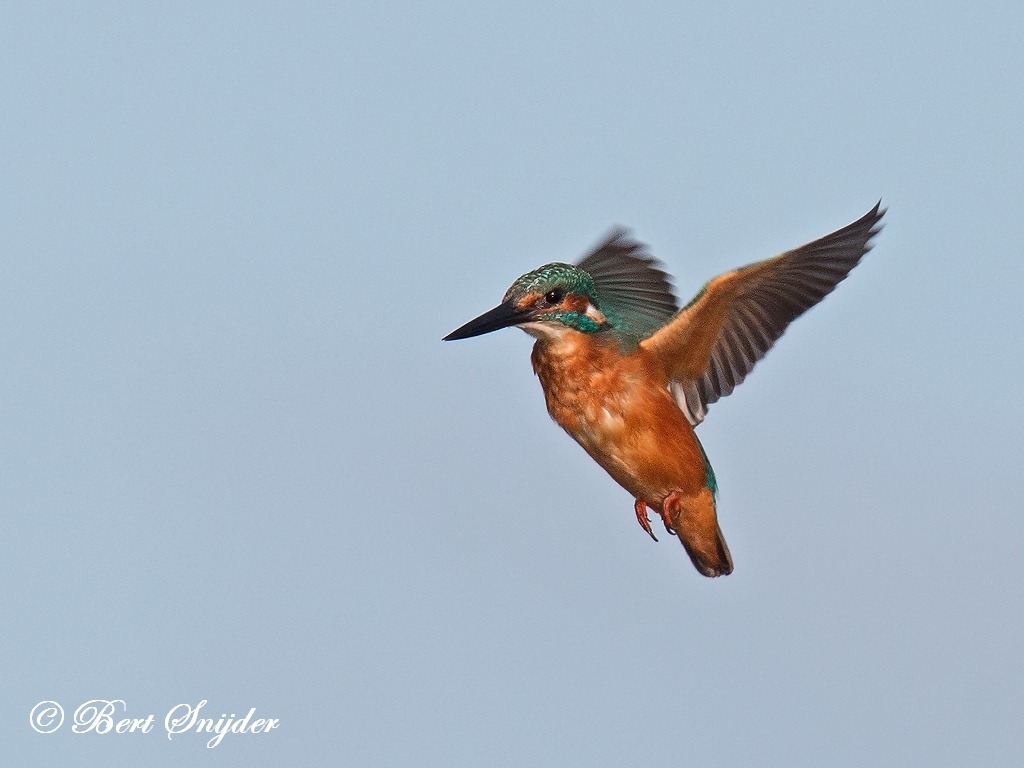

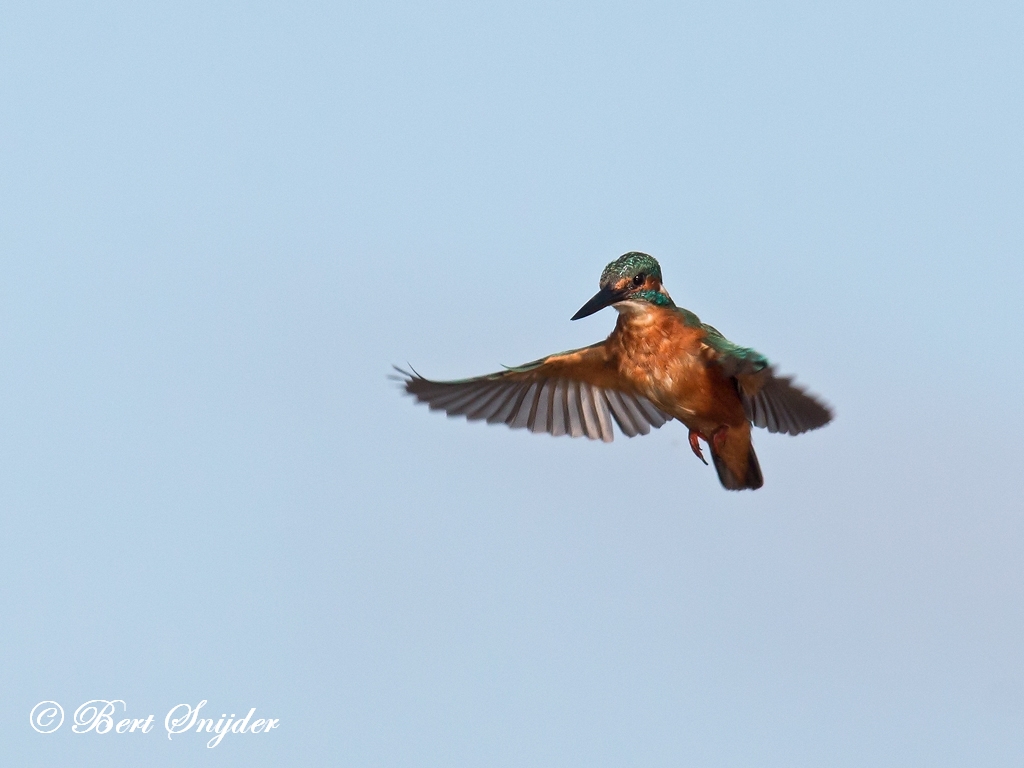
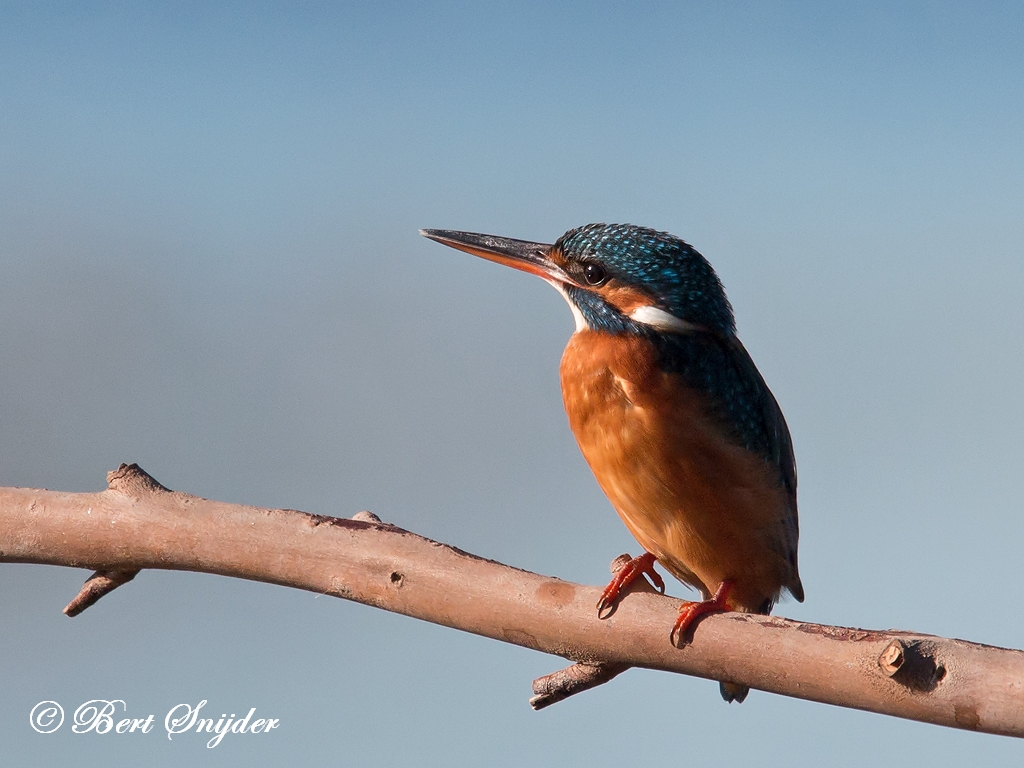

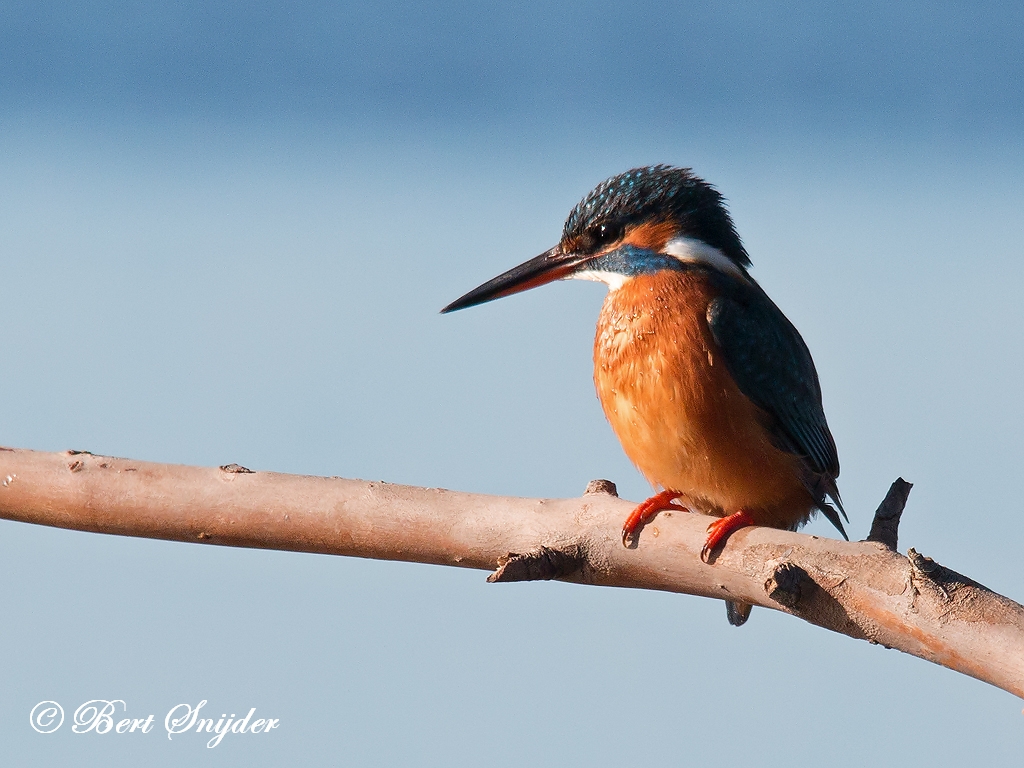
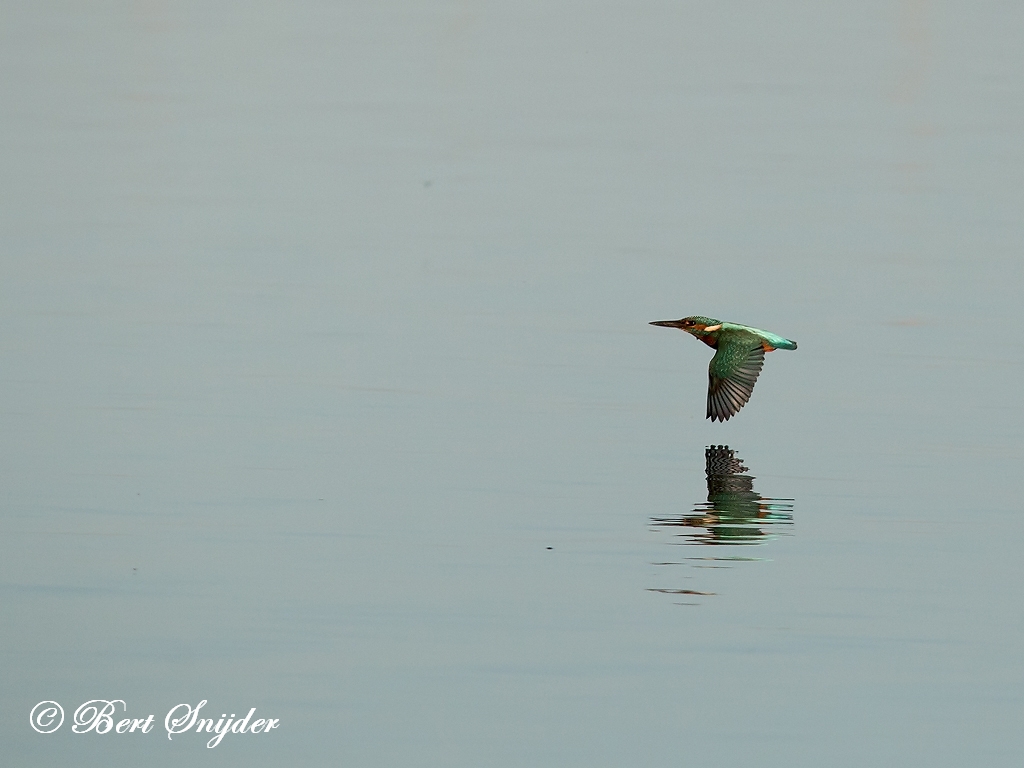


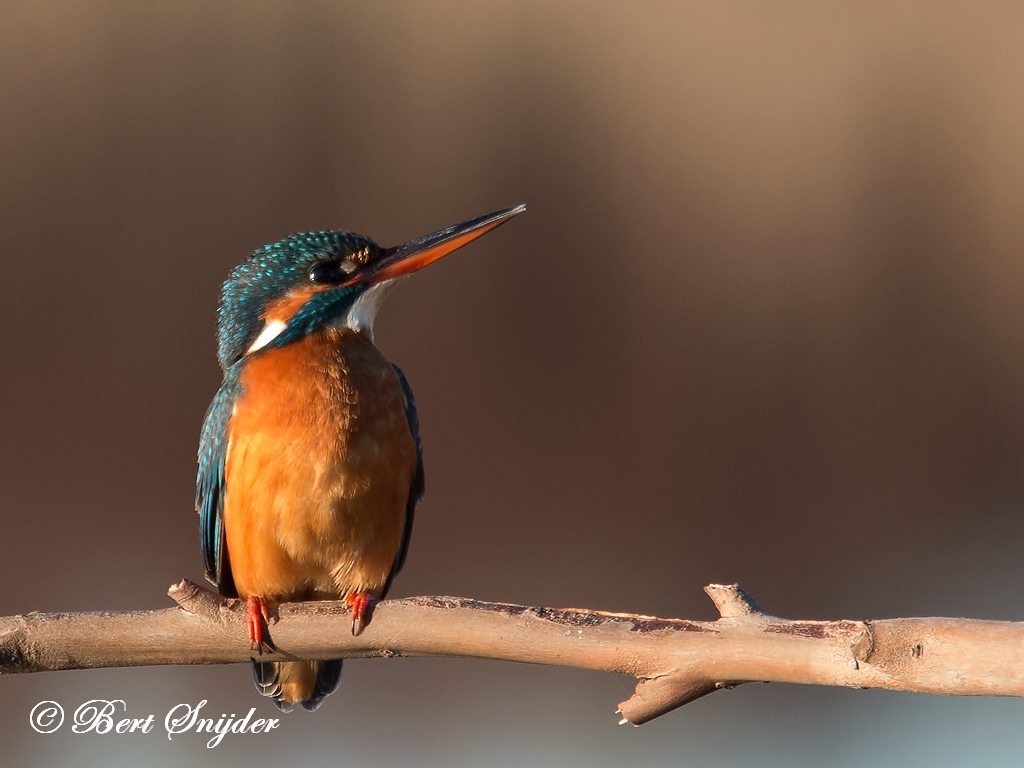
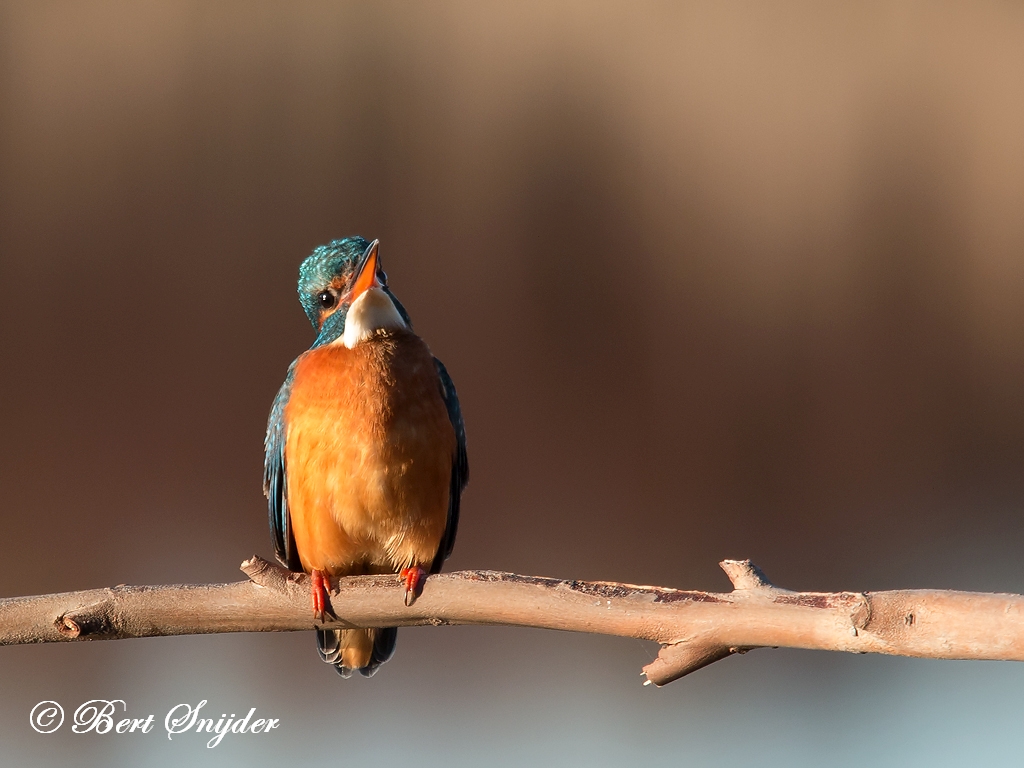
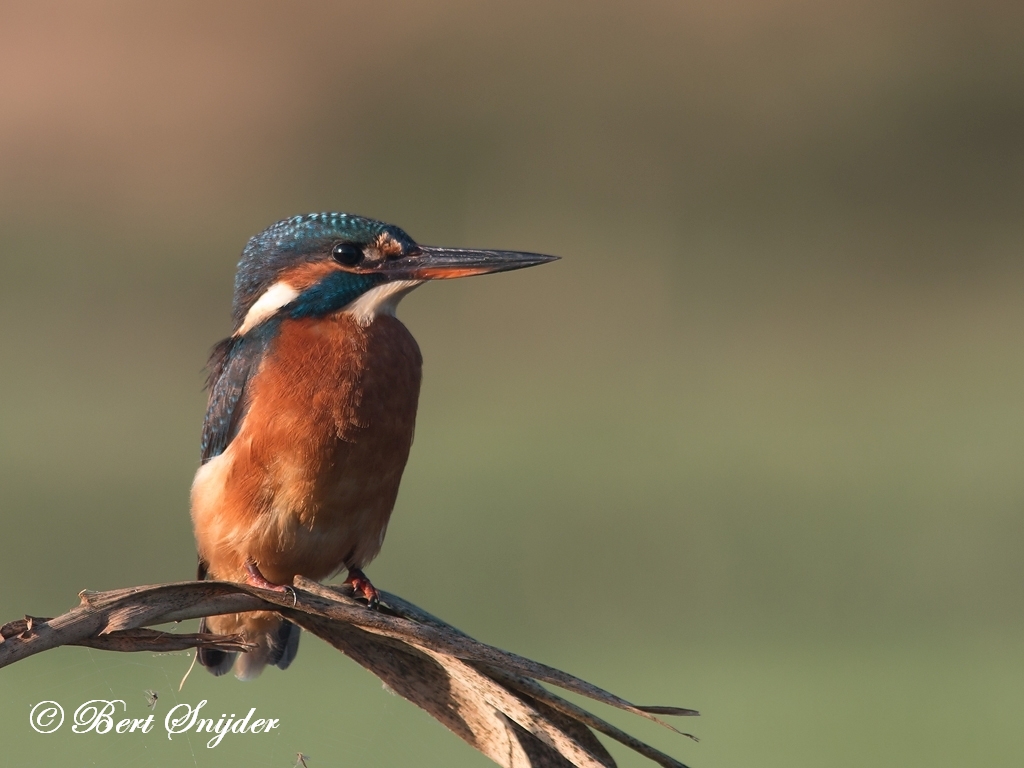
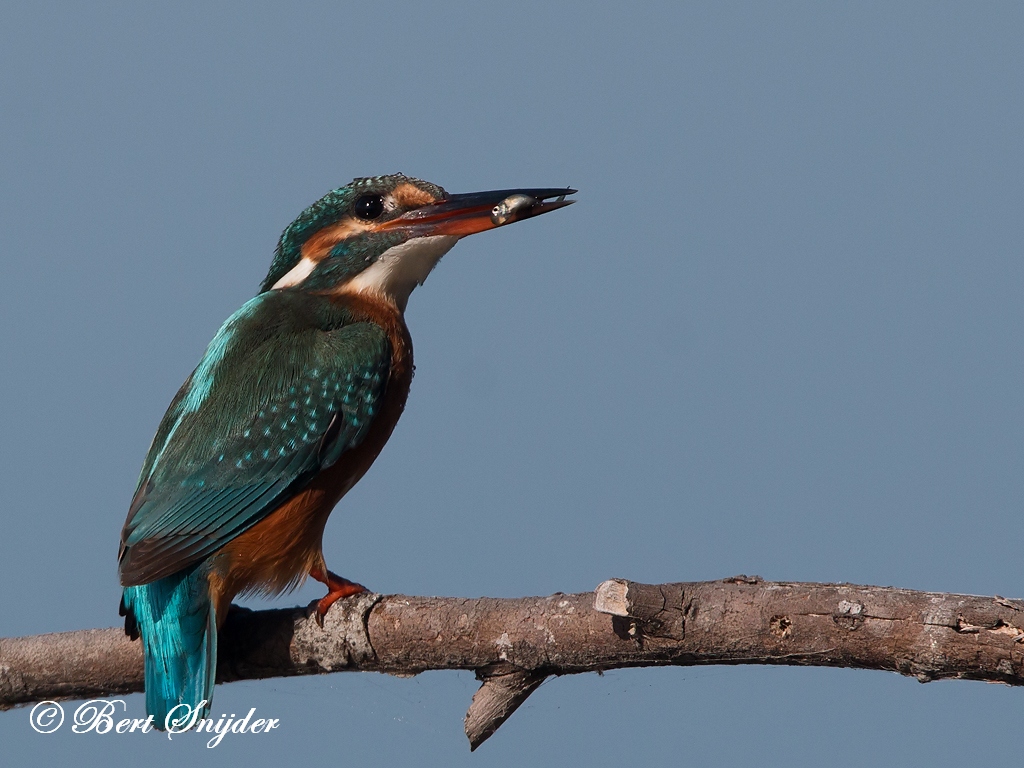

Other synonyms:
Asturian: Verderríos
Breton: An diredig sant Gwennole, Evn-glas, Labous-sant-Nikolaz, Labous-sant-Wennole
Catalan: Arner, Blauet, Falcia
Catalan (Balears): Arner
Valencian: Falcia
Cebuano: uwak-bata
Welsh: Glas y dorlan, Glas y geulan, Pysgotwr
Danish: Isfugl
German: Eisvogel
English: Common Kingfisher, Eurasian Kingfisher, European Kingfisher, Kingfisher, River Kingfisher, Ruddy kingfisher, Small Blue Kingfisher
Esperanto: alciono
Spanish: Martin Pescador, Martín Pescador, Martín pescador común, Martín Pescador de Eurasia
Estonian: Jäälind, lõuna-jäälind
Basque: Blauet, Martin arrantzale, Martin arrantzalea
Finnish: Kuningaskalastaja
Faroese: Ísfuglur, Kyrrfuglur
French: Martin-pêcheur, Martin-pêcheur d’Europe
Irish: Cruidín, Iscaire cóirneach, Murlach
Gaelic: Biorra-Crùidein
Galician: Birrio, Blauet, Picapeixe
Manx: Eeasteyr beg ny hawin, Ushag Awiney
Croatian: Vodomar, Vodomar ribar
Hungarian: Jégmadár
Indonesian: Idjowelanda, Idju-idju walanda, Raja udang sungai, Rajaudang Erasia, Raja-udang Erasia
Icelandic: Bláþyrill
Italian: Martin pescatore, Martin pescatore comune, Martin pescatore eurasiatico
Japanese: kawasemi, kawa-semi
Latin: Alcedo atthis
Lithuanian: Tulžys, Žuvininink?lis
Dutch: IJsvogel
Norwegian: Isfugl, Kongsfisker
Polish: Jerzyk maly, Jerzyk ma?y, zimorodek, zimorodek (zwyczajny), Zimorodek obro?ny, Zimorodek zwyczajny
Portuguese: guarda rios comum, Guarda-rios, Guarda-rios-comum, Martim-pescador
Romansh: Pestgaderin
Russian: Obyknovenny Zimorodok
Sardinian: Aciufa aciufa
Scots: Biorra cruidein
Slovenian: vodomec
Albanian: Bilbil uji, Bilbili peshkatar
Swedish: Kungsfiskare
Swahili: Mbayuwayu
Turkmen: Zaply
Travel Birdwatching Holiday Alentejo, Vacation Portugal for birders to see birds on your trip.
Breath taking – thank you